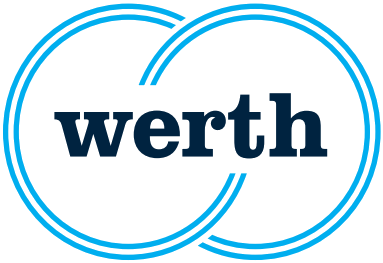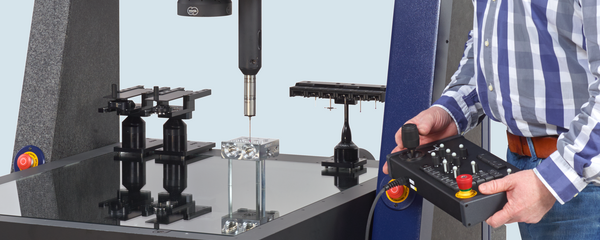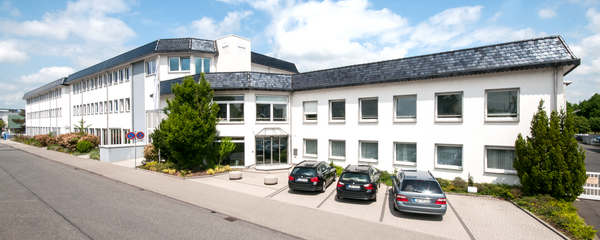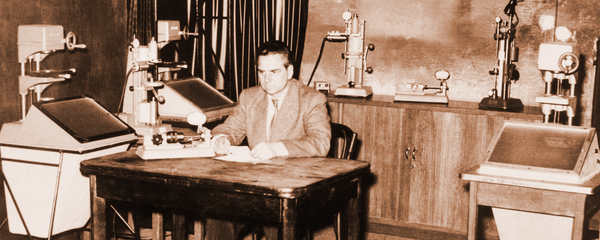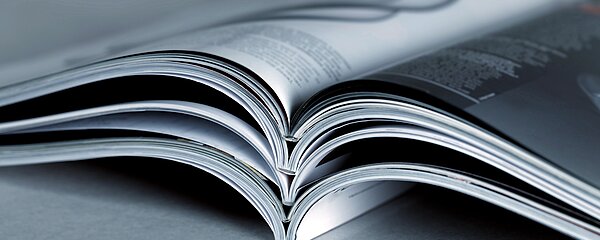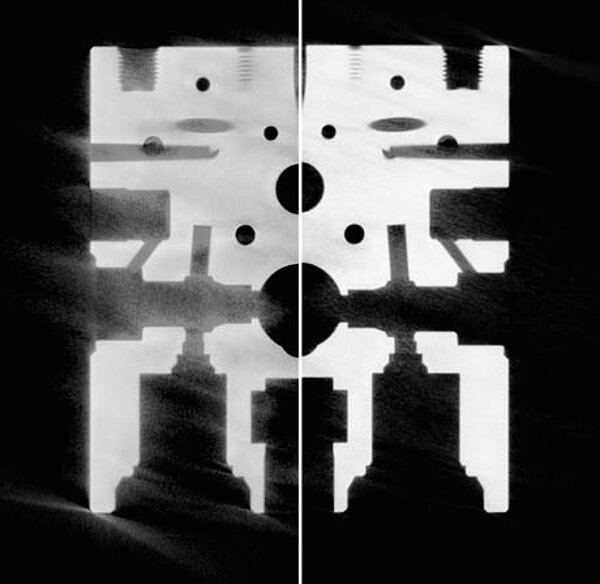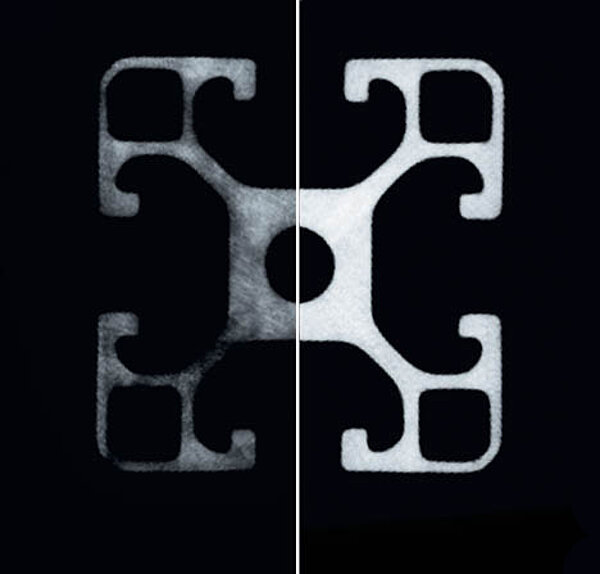Large cone beam angle
Tomography with a cone-shaped X-ray beam enables short measuring times by simultaneously detecting large areas of the workpiece. However, as the cone beam angle increases, the workpiece is scanned more poorly. A patented method can be used to simulate the resulting cone beam artifacts on the target geometry and apply them to correct the measurement volume.
The correction can be calculated by simulation on the CAD model or on a point cloud of a master part measurement of the workpiece. Once calculated, the correction is applicable to point clouds of the same workpiece or further workpieces of the same type, e.g., in a series measurement. Volumes can also be corrected. The calculation of the correction is based on a simulation on a point cloud of the measured workpiece.
By measuring with a larger cone beam angle, it is possible to reduce the measurement time for the same repeatability or to improve the repeatability for the same measurement time. This is achieved by using a larger part of the available radiation energy, for example by reducing the focus-detector distance (FDD) at the same imaging scale. The cone beam artifacts and the resulting systematic measurement errors can be greatly reduced by using cone beam artifact correction.
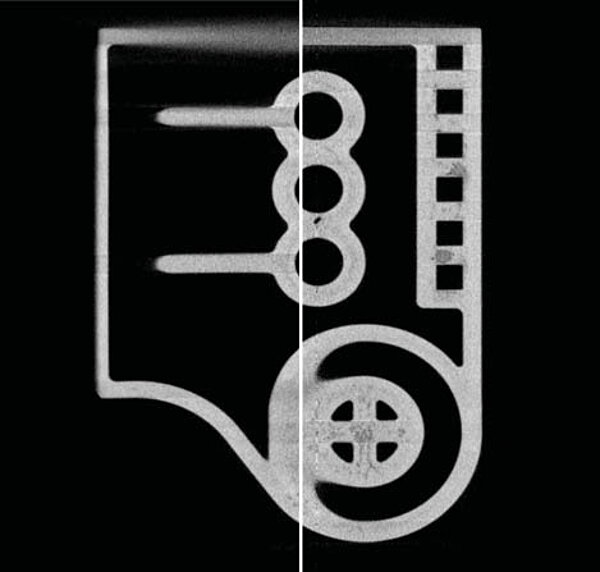
Cone beam artifact correction: volume without (left) and with correction (right)
Ring artifacts when measuring low attenuating materials
The sensitivity determines the conversion of X-ray radiation into a measured intensity. Due to not fully corrected sensitivity differences, the same radiation intensity at two neighboring pixels leads to darker or lighter gray values, respectively. Back-projection of these differences in all rotational positions results in ring-shaped artifacts in the reconstructed volume.
With the new WinWerth® ring artifact correction, the information contained in the intensity images about the sensitivity differences between the pixels is determined from the current measurement and used for fine correction of the images. In the volume reconstructed from this, the ring artifacts are greatly reduced. These are more noticeable in the case of weakly absorbing workpieces. For this reason, the use of this correction method is particularly useful for measurements of workpieces with a low attenuation capability, such as micro-gears made of plastic, material samples of foam materials or lens packages for smartphones..
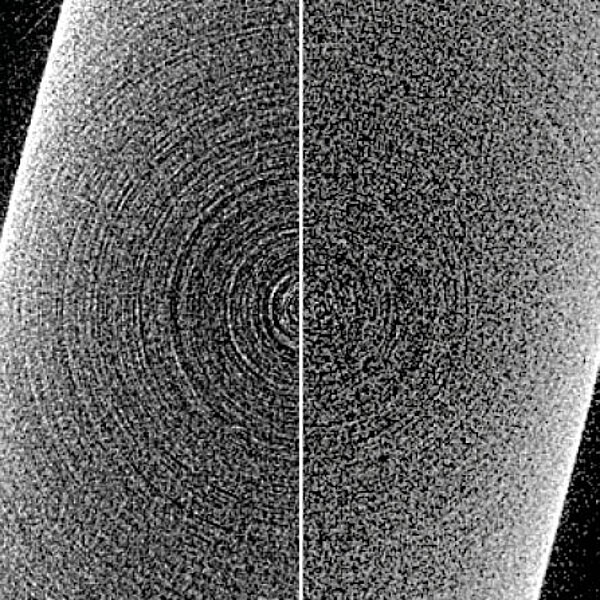
Ring artifact correction: volume without (left) and with correction (right)
